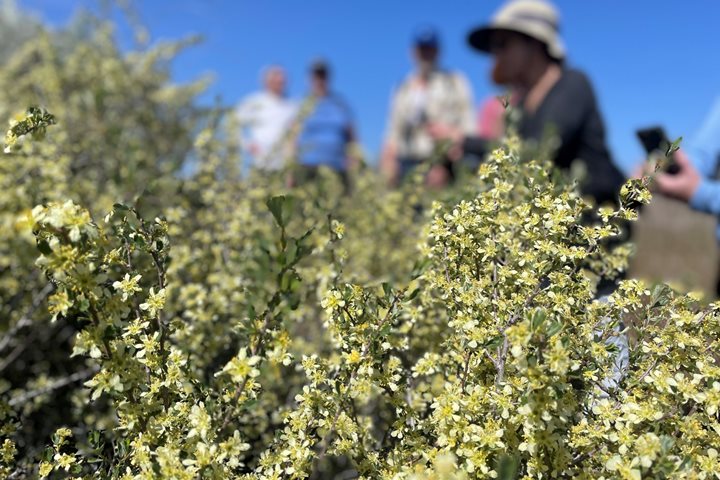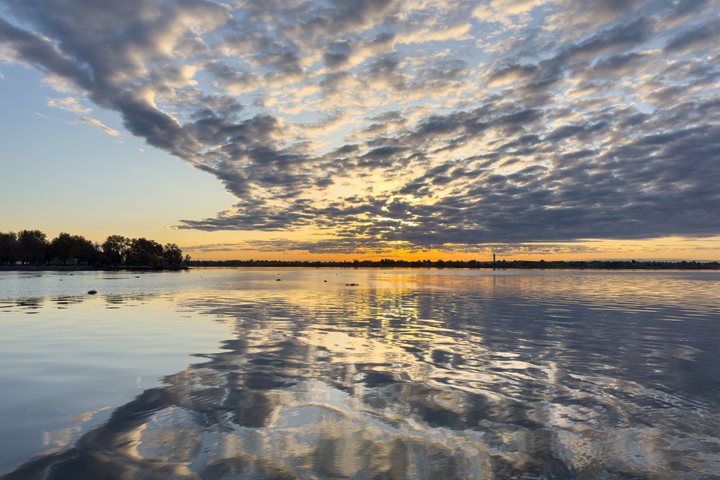National Geographic Sea Bird left the dock at Clarkston at 10 p.m. and went through two locks while we slept. We awakened on approach to our morning anchorage at the confluence of the Snake and Palouse Rivers. “Wear it if you brought it” was the wardrobe suggestion for our early activities because the temperature had dropped overnight, and was a chilly 32 degrees at 7 a.m. The cooler air meeting the warmer water rewarded us with beautiful mist floating up from the surface and carried west by a gentle breeze.
People got a chance to explore the gorgeous basalt-layered cliffs along the lower Palouse River by Zodiac and kayak and were treated to a host of wildlife sightings including mule deer, beaver, porcupine, ring-necked pheasants, red-tailed hawks, and great blue heron. People also took a bus ride nine miles inland to the magnificent Palouse River falls. The bus drove us through the rolling hills and mesas of varying shades of gold, tan, and brown. These “Scablands” were created by the massive Bretz floods thousands of years ago at the end of the last ice age. In the early 1900s train tracks and trestle bridge were built in the valley of a huge fault line.
Back aboard National Geographic Sea Bird by late morning, we continued to sail west on the Snake River, and shortly after lunch we transited the lock at Lower Monumental Dam. It’s amazing to see these feats of mechanical engineering (though I do wonder what the river would be like undammed…). After a nap, we gathered in the lounge to hear an overview of Lewis and Clark’s Corps of Discovery by our Road Scholar Historian, and a bit later enjoyed cocktails, Recap, and another delicious meal prepared by our wonderful galley.









